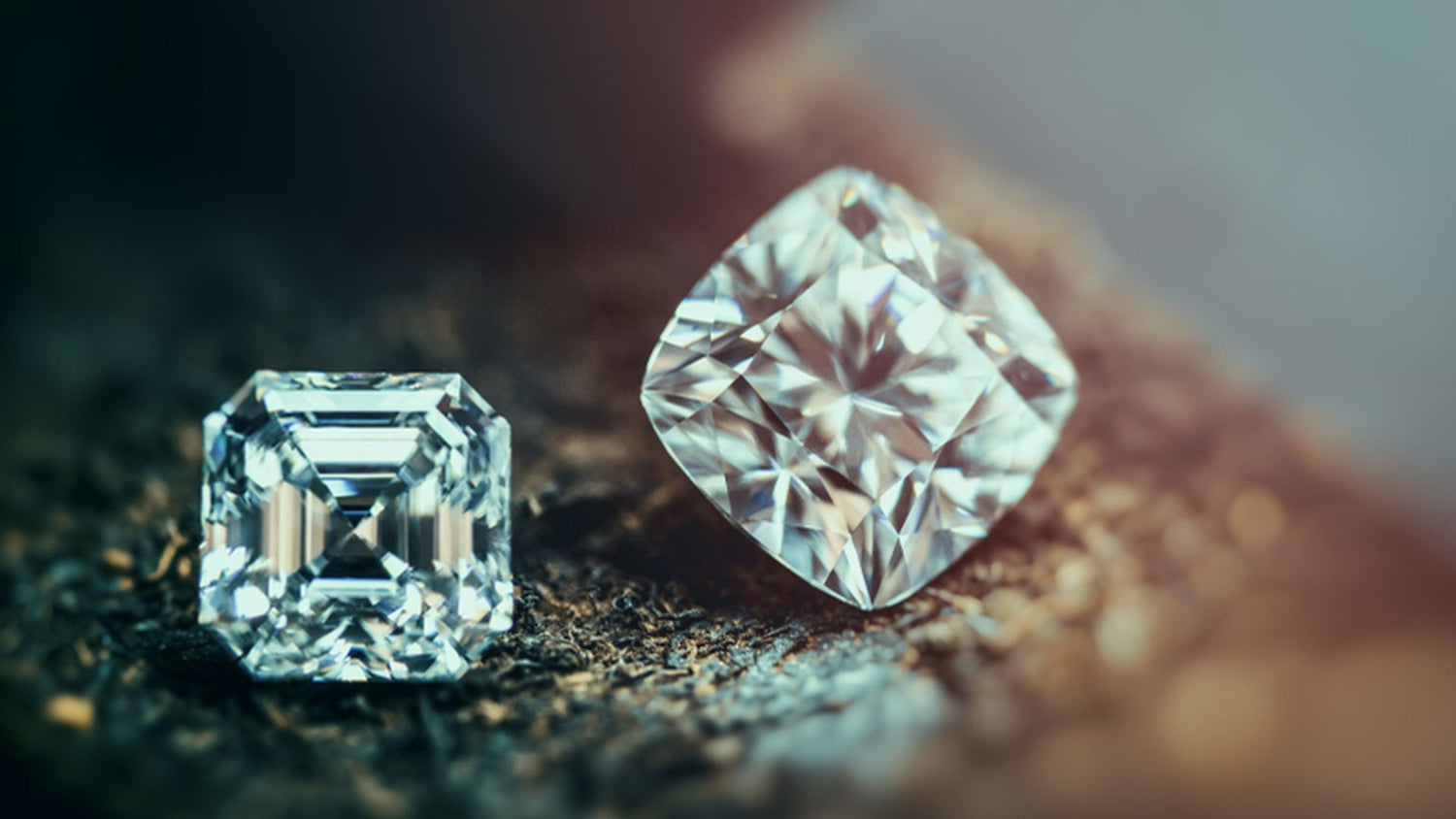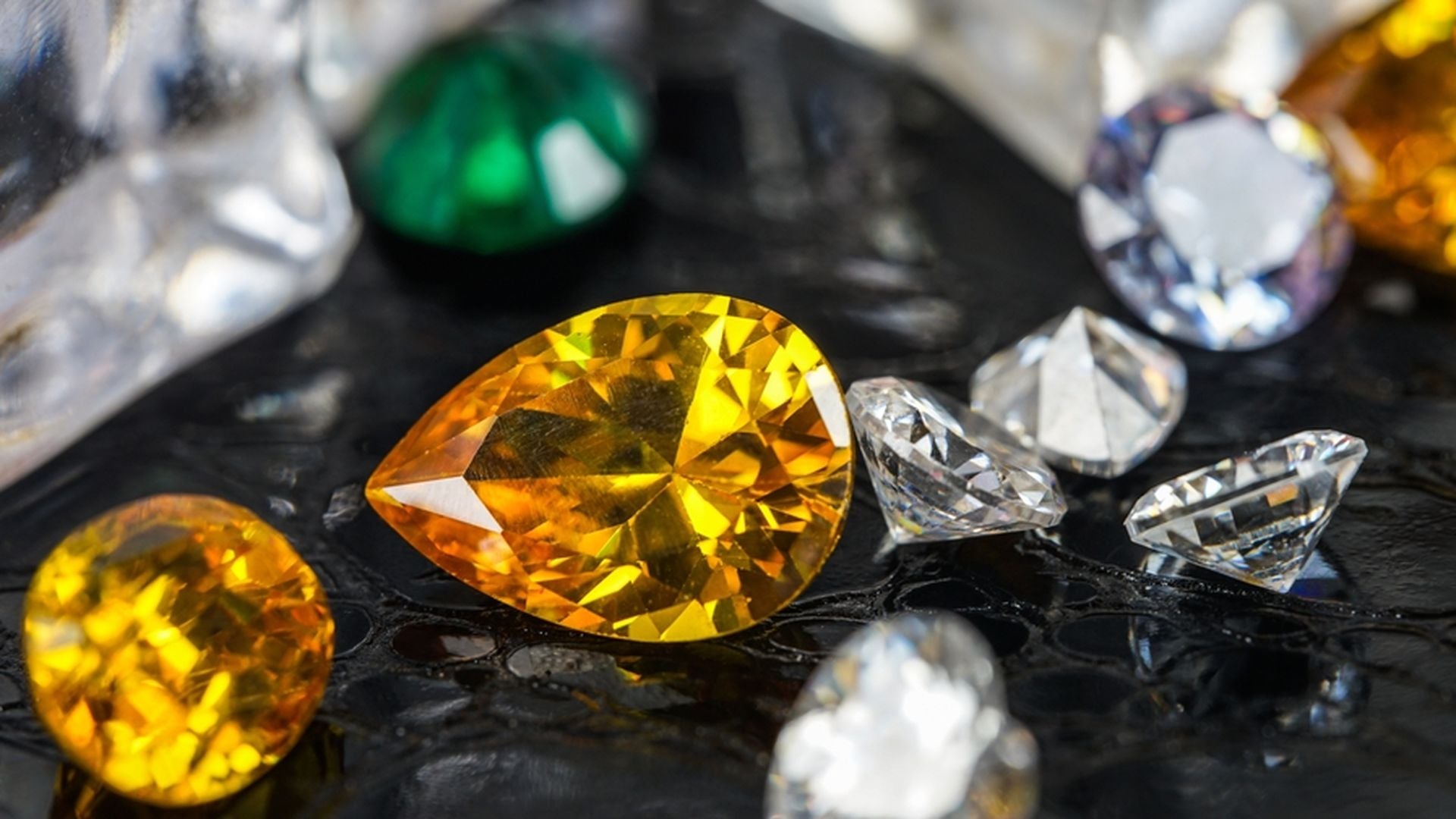The diamond industry has long been dominated by mined diamonds, which require mining to extract them from deep within the Earth's crust. This process can disturb local wildlife habitats, pollute groundwater, and cause lasting scars on the earth. However, technology has brought a new player to the diamond market: lab-grown diamonds.
These diamonds are created in a laboratory setting using advanced technology and offer several benefits over mined diamonds, including ethical and sustainable production, as well as affordability. As a result, lab-grown diamonds are challenging the traditional diamond industry, causing those with unyielding allegiance to continue the mining trade, to worry.
For Match fans out there looking at purchasing lab-grown diamond jewellery, it is important to be cautious of the many falsehoods circulating about this new and disruptive diamond.
Let’s take a look at eight common myths about lab-grown diamonds and debunk them.

Myth #1: Lab-grown diamonds are fake or synthetic diamonds
One of the biggest misconceptions about lab-grown diamonds is that they are fake or synthetic diamonds. This is simply not true. Lab-grown diamonds are real diamonds with the same physical, chemical, and optical properties as mined diamonds. They are grown in a lab using advanced technology that replicates the same conditions that mined diamonds are formed under.
Myth #2: Lab-grown diamonds are lower quality than mined diamonds
This is not only wrong… the total opposite is technically true!
Another common myth about lab-grown diamonds is that they are of lower quality than mined diamonds. Lab-grown diamonds are held to the same standards as mined diamonds and are graded using the same criteria, including carat weight, colour, clarity, and cut. Lab-grown can have fewer inclusions and blemishes than mined diamonds because they are grown in a controlled environment, which results in them being routinely rated higher in quality than mined diamonds. Only 2% of the mined diamonds in the jewellery market as rated as pure as lab-grown diamonds!
Myth #3: Lab-grown diamonds are less valuable than mined diamonds
Although lab-grown diamonds are often priced lower than mined diamonds, this does not mean they are less valuable. In monetary terms, lab-grown diamonds are just as valuable as mined diamonds, and their value is expected to increase as the market share for lab-grown diamonds continues to grow. Furthermore, lab-grown diamonds are identical to mined diamonds in every way, making them an excellent choice for those looking for a high-quality diamond at a fair price point.
Myth #4: Lab-grown diamonds look different from mined diamonds
Some people believe that lab-grown diamonds look different from mined diamonds, but this is not true. Lab-grown diamonds have the same optical properties as mined diamonds and can be cut and polished to the same standards. Lab-grown diamonds can be even more brilliant and sparkly than mined diamonds because they have fewer inclusions.

Myth #5: Lab-grown diamonds are not environmentally friendly
Lab-grown diamonds are more environmentally friendly than mined diamonds. Mining diamonds can have a significant impact on the environment, including deforestation, soil erosion, and water pollution. Lab-grown diamonds, on the other hand, have a much smaller environmental footprint because they are grown in a controlled environment without the need for mining.
Myth #6: Lab-grown diamonds are unethical
A common misconception about lab-grown diamonds is that they are not ethical. While it is true that there are ethical concerns surrounding the mined diamond industry, lab-grown diamonds are considered to be a more ethical option than mined diamonds. Lab-grown diamonds are produced in a laboratory environment, eliminating the risk of human rights abuses or conflict financing in countries where diamond mining is funded.
Myth #7: Lab-grown diamonds are not as durable as mined diamonds
Contrary to popular belief, lab-grown diamonds are just as durable as mined diamonds. Both mined and lab-grown diamonds are made of carbon and can withstand scratches and chips. They can only be cut or polished by another diamond. Lab-grown diamonds are even used in industrial applications due to their hardness and durability.
Myth #8: Lab-grown diamonds are a fad
Lab-grown diamonds have been gaining popularity for several years and are not just a passing trend. As more consumers become aware of the environmental and ethical concerns surrounding mined diamonds, the demand for lab-grown diamonds continues to rise.
Furthermore, advancements in technology have made it easier and more cost-effective to produce high-quality lab-grown diamonds. As a result, the industry is expected to continue growing, with some experts predicting that lab-grown diamonds could account for up to 10% of the diamond market by 2030, or possibly even more. There’s indeed potential, as those who care most for the planet hope, of replacing mined diamonds altogether with lab-grown as the preferred option.

Now you’re a lab-grown diamond myth-debunking expert!
Consumers need to be informed about the misconceptions surrounding lab-grown diamonds. The false claims that they are fake or of inferior quality are simply attempts to discredit a rapidly growing industry that is revolutionizing the diamond market. Lab-grown diamonds have the same physical, chemical, and optical properties as mined diamonds and offer a sustainable and ethical alternative. Consumers must educate themselves and make informed decisions when purchasing diamonds.
By choosing lab-grown diamonds, consumers can enjoy the beauty and elegance of a diamond while contributing to a more sustainable and socially responsible industry. It's time to reject falsehoods and embrace a future where lab-grown diamonds are valued for their unique and positive qualities.





Leave a comment
This site is protected by hCaptcha and the hCaptcha Privacy Policy and Terms of Service apply.